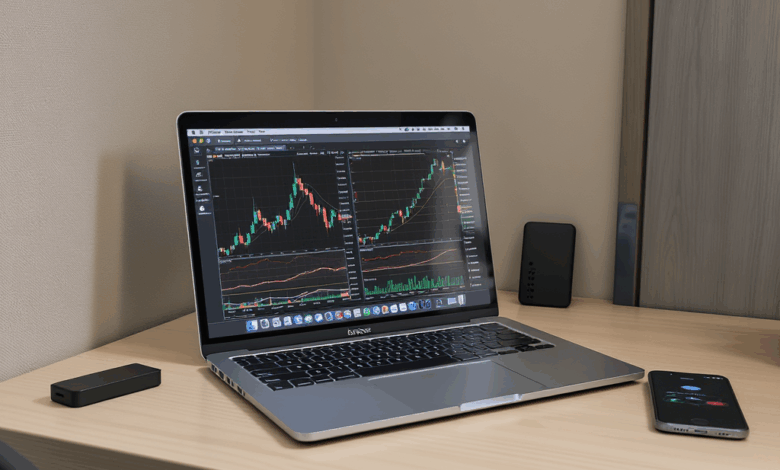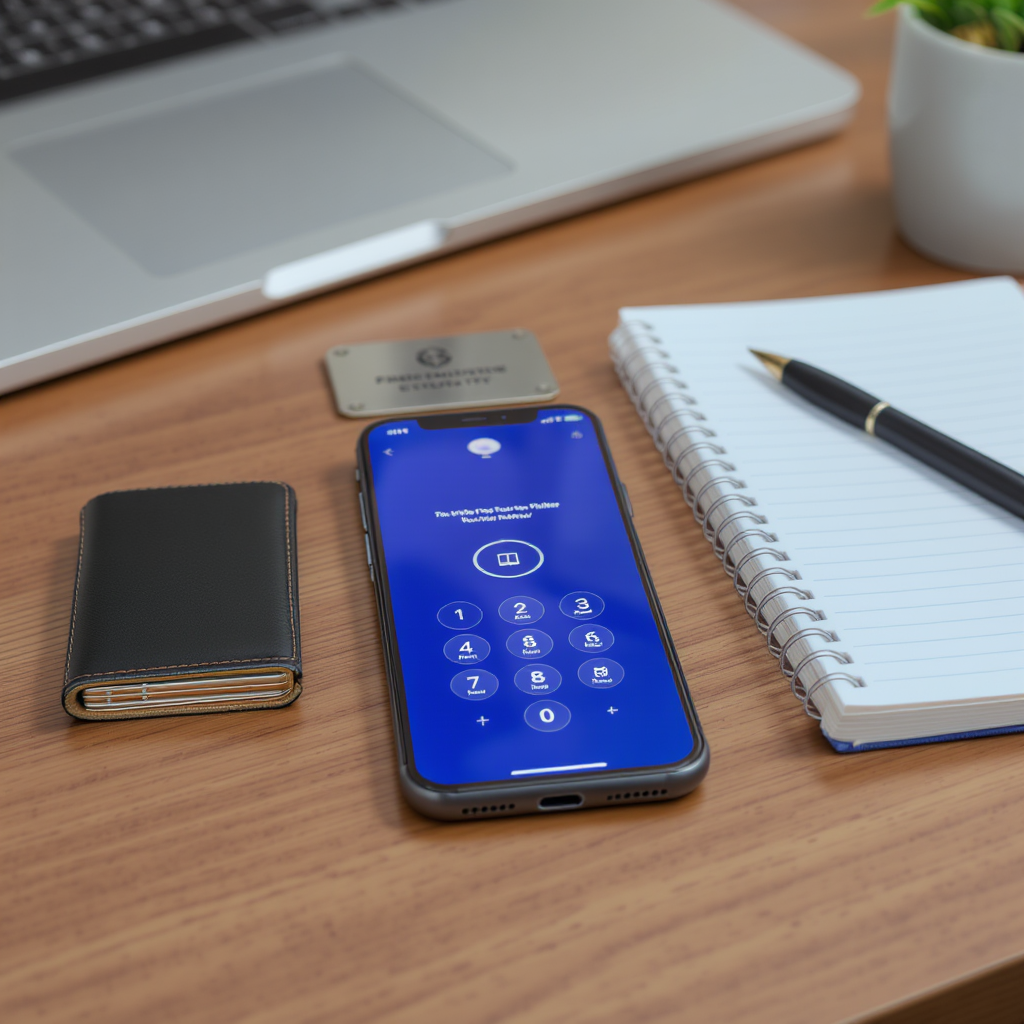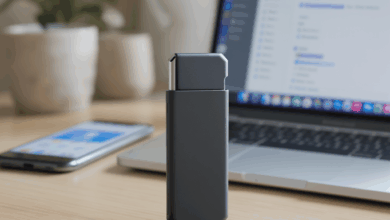Guarding Your Digital Treasure – A Beginner’s Journey into Cryptocurrency Security

Preparing for Your Cryptocurrency Security Journey
Before we embark on securing your digital assets, let’s pause and gather the essentials. Think of this as packing your backpack before a hike — missing key items can leave you vulnerable.
What You Need to Begin
- A clear understanding of your holdings: Know the cryptocurrencies you own and where they are stored (exchanges, wallets).
- Devices you’ll use: A personal computer or smartphone dedicated to managing your crypto.
- A secure environment: A private, trusted space where you can perform sensitive tasks without interruptions.
Tools and Resources Checklist
- Hardware wallet (e.g., Ledger, Trezor) for offline storage.
- Authenticator app (Google Authenticator, Authy) for two-factor authentication.
- Paper or metal backup tools to store recovery phrases safely.
- Access to trusted cryptocurrency news sources for ongoing education.
Warning: Avoid using public Wi-Fi or shared computers when handling your crypto accounts. Cybercriminals often exploit these to steal sensitive information.
Building the Foundation Core Security Steps
Now, let’s take the crucial first steps that form the bedrock of your cryptocurrency security.
1. Secure Your Private Keys and Recovery Phrases
Your private key is the master key to your crypto kingdom. Losing it or having it stolen means losing your assets.
How to protect them:
- Write down your recovery phrase (usually 12 or 24 words) on paper or, better yet, engraved on a metal plate to prevent damage.
- Store this backup in a safe place — a home safe or a safety deposit box.
- Never store your keys or recovery phrases digitally (no photos, text files, or emails).
- Do not share these with anyone, no matter how trustworthy they seem.
Safety note: If someone physically threatens you to reveal your keys (a “wrench attack”), consider using wallets that support multi-signature or hidden wallets to mitigate risks.
2. Enable Two-Factor Authentication (2FA) Everywhere
Passwords alone aren’t enough anymore. Adding 2FA means even if someone gets your password, they can’t enter your account without a second verification step.
Implementing 2FA:
- Download an authenticator app like Google Authenticator or Authy.
- On your cryptocurrency exchange and wallet accounts, find the security settings and enable 2FA.
- Scan the provided QR code with your authenticator app.
- Test the setup by logging out and logging back in using the 2FA code.
Avoid: SMS-based 2FA, as text messages can be intercepted or SIM-swapped by attackers.
3. Use Hardware Wallets for Large Holdings
For significant amounts, keeping your crypto online is like leaving your valuables on a city bench. Hardware wallets store your keys offline, making hacking attempts far less likely.
Setting up a hardware wallet:
- Purchase a reputable hardware wallet from an official source.
- Follow the manufacturer’s instructions to initialize it, including setting a PIN.
- Write down the recovery phrase carefully during setup.
- Transfer your cryptocurrency from exchanges or hot wallets to this hardware wallet.
Tip: Keep your hardware wallet firmware updated for latest security patches.
Verifying and Troubleshooting Your Security Setup
After putting these steps in place, how can you be sure you’re truly protected? Let’s walk through some checks and handle common hiccups.
1. Confirm Your Backup Integrity
- Try restoring your wallet on a separate device using your recovery phrase (without transferring funds).
- If restoration fails, reassess your backup method and create a new, secure backup.
2. Test Two-Factor Authentication
- Log out of your exchange or wallet and log back in using the 2FA code.
- If codes aren’t accepted, check your device’s time settings; authenticator apps rely on accurate time.
- Keep backup codes safe to regain access if you lose your phone.
3. Monitor for Phishing Attempts
- Be skeptical of emails or messages asking for your keys or passwords.
- Always verify URLs before entering credentials.
- Use bookmark shortcuts to access important sites.
Common issue: Lost hardware wallet PIN. Some devices have recovery options via the recovery phrase. Without it, funds may be inaccessible.
4. Stay Informed and Adapt
The crypto world evolves rapidly — new threats emerge, and security standards improve.
- Subscribe to trusted crypto security newsletters.
- Regularly update your software and hardware wallets.
- Consider multi-signature wallets for added protection as you grow more confident.
Securing your cryptocurrency is less about a one-time setup and more about cultivating a mindful, ongoing practice. It can feel daunting at first, but every step you take is a stride toward protecting your digital future.
So, what parts of this journey feel the most challenging to you? Are there security practices you’re hesitant to try? Remember, the best security strategy is the one you can consistently maintain and trust. Let’s keep exploring this evolving landscape together.
Advanced Wallet Security Configurations
When you start treating cryptocurrency security not just as a precaution but as a professional discipline, the simplest steps feel like the surface of a deep ocean. It’s tempting to settle for the basics—hardware wallets, 2FA—but what if we dive deeper? How do experts fine-tune their defenses to withstand increasingly sophisticated threats?
Multi-Signature Wallets: Distributing Trust
Multi-signature (multisig) wallets require more than one private key to authorize a transaction. This setup spreads the risk and reduces the chance of a single point of failure.
Implementing Multisig Wallets:
- Choose a reputable multisig wallet provider that supports your cryptocurrencies (e.g., Electrum, Gnosis Safe).
- Decide on the signature threshold (e.g., 2-of-3 or 3-of-5 keys required to move funds).
- Distribute private keys among trusted parties or devices, ideally across different physical locations.
- Regularly verify that all signatories maintain secure backups of their keys.
Caution: Mismanagement of multisig keys can lock you out permanently. Always test wallet recovery with dummy transactions.
Hardware Wallet Advanced Settings
Most hardware wallets offer customizable security parameters beyond initial setup.
- Passphrase Protection: Adding a hidden passphrase creates an additional wallet layer, invisible without the passphrase.
- PIN Complexity: Use the longest, most complex PIN your device supports.
- Firmware Verification: Before each use, verify your hardware wallet’s firmware integrity through official channels.
These settings aren’t just bells and whistles—they can be game-changers when facing targeted threats.
Cold Storage Best Practices
Cold storage means keeping your private keys completely offline. Professionals take it further:
- Use air-gapped devices (never connected to the internet) to generate and store keys.
- Employ physical security measures such as tamper-evident bags or safes with biometric locks.
- Engage in periodic audits by attempting wallet restoration on separate devices.
Optimizing Security Workflows for Efficiency and Reliability
As your crypto portfolio grows, manual security procedures become tedious and prone to error. Experts adopt optimizations to streamline their workflows without sacrificing safety.
Scripted Backup Automation
Manually writing down recovery phrases is error-prone. Some advanced users use automated, encrypted backup scripts:
- Generate encrypted backups of wallet configurations and metadata.
- Store backups in multiple secure offline locations.
- Use version control for backup integrity and recovery history.
Note: Automation must be handled with strict security protocols to avoid exposing sensitive data.
Security Health Monitoring Dashboards
Monitoring your crypto accounts continuously can help detect anomalies early.
- Set up alerts for unusual account activity or login attempts.
- Integrate with blockchain analytics tools to track transaction patterns.
- Use trusted API services that notify you of security updates or vulnerabilities related to your holdings.
Time-Based Access Controls
Limiting when and how crypto accounts can be accessed adds an extra security layer.
- Configure wallets or exchanges to restrict access during off-hours.
- Use smart contracts with time locks for scheduled transactions.
- Employ VPNs or IP whitelisting to control geographic access.
Expert Troubleshooting and Incident Response
Even the best defenses can be tested by unexpected issues. Handling them swiftly and knowledgeably defines professional competence.
Recovering from Lost Hardware Wallet PINs
If you forget your hardware wallet PIN:
- Use the recovery phrase to restore funds on a new device.
- Avoid repeated PIN attempts to prevent device wiping.
- Contact manufacturer support only after verifying official channels to avoid scams.
Phishing Attack Mitigation Techniques
Phishing attacks have evolved beyond basic emails:
- Use browser extensions that flag known malicious sites.
- Regularly educate yourself on the latest phishing tactics.
- Implement email filtering rules to quarantine suspicious messages.
Handling Compromised 2FA Devices
If your phone with the authenticator app is lost or stolen:
- Immediately use backup codes to secure your accounts.
- Transfer 2FA accounts to a new device following recovery procedures.
- Consider hardware-based 2FA tokens (e.g., YubiKey) for enhanced security.
Critical: Always have multiple 2FA recovery options to avoid lockouts.
Dealing with Multi-Signature Wallet Failures
Multisig wallets can fail if a signatory loses keys or is unresponsive.
- Implement pre-agreed contingency plans among signatories.
- Use time-delayed multisig setups that allow recovery after a timeout.
- Regularly test all signatories’ ability to sign transactions.
Embracing these advanced techniques often feels like stepping into a labyrinth—complex, sometimes overwhelming. Yet, each layer you add is another shield for your digital assets. What balances can we strike between complexity and usability? How do we avoid turning security into a barrier rather than a safeguard? Perhaps the real mastery lies not in perfect defenses, but in ongoing reflection and adaptation. Where does your journey take you next?

Looking back on this winding path of cryptocurrency security, I realize how much this journey mirrors life’s broader challenges—balancing vigilance with trust, complexity with simplicity. Securing digital assets isn’t a checklist to finish once and forget; it’s a continuous conversation we have with ourselves, our technology, and the evolving world around us. I wonder, as you take these steps forward, which parts will feel like second nature, and which will keep you awake at night, pondering what more could be done? Perhaps the true art lies not just in building an impenetrable fortress, but in embracing the humility to learn, adapt, and question our own defenses. So, as you close this chapter, what questions linger for you? What doubts or hopes spark new curiosities? Let’s carry these reflections together—not as a conclusion, but as an invitation to keep exploring the uncharted territories of trust, security, and digital freedom.




